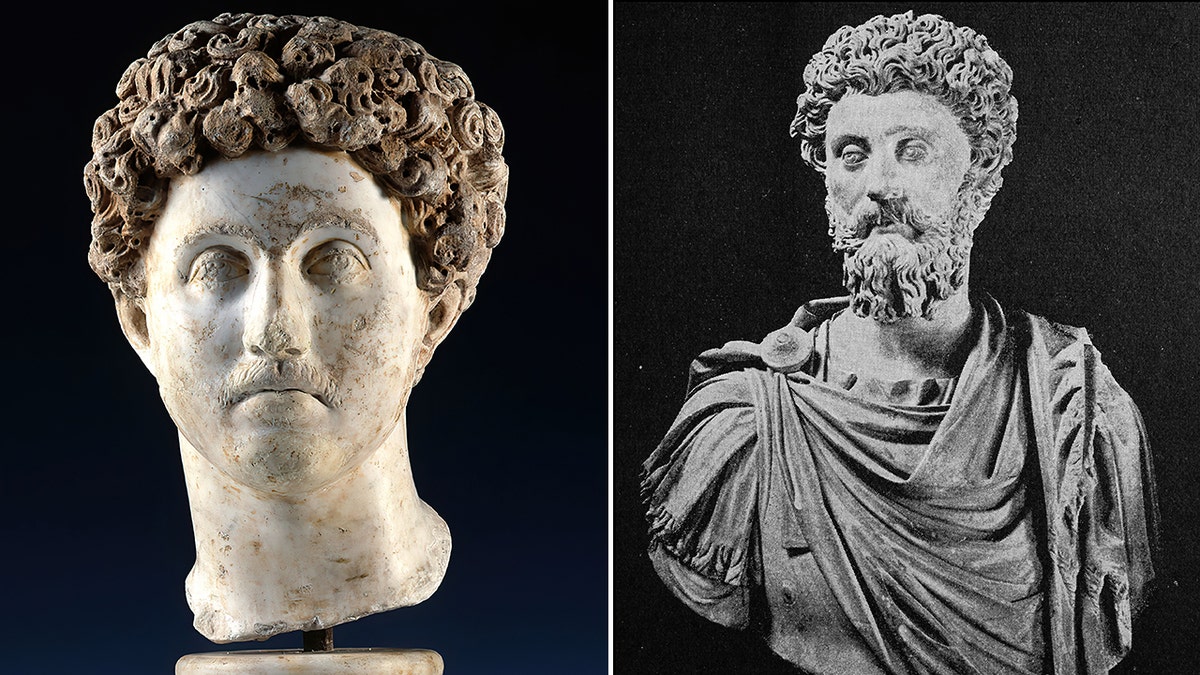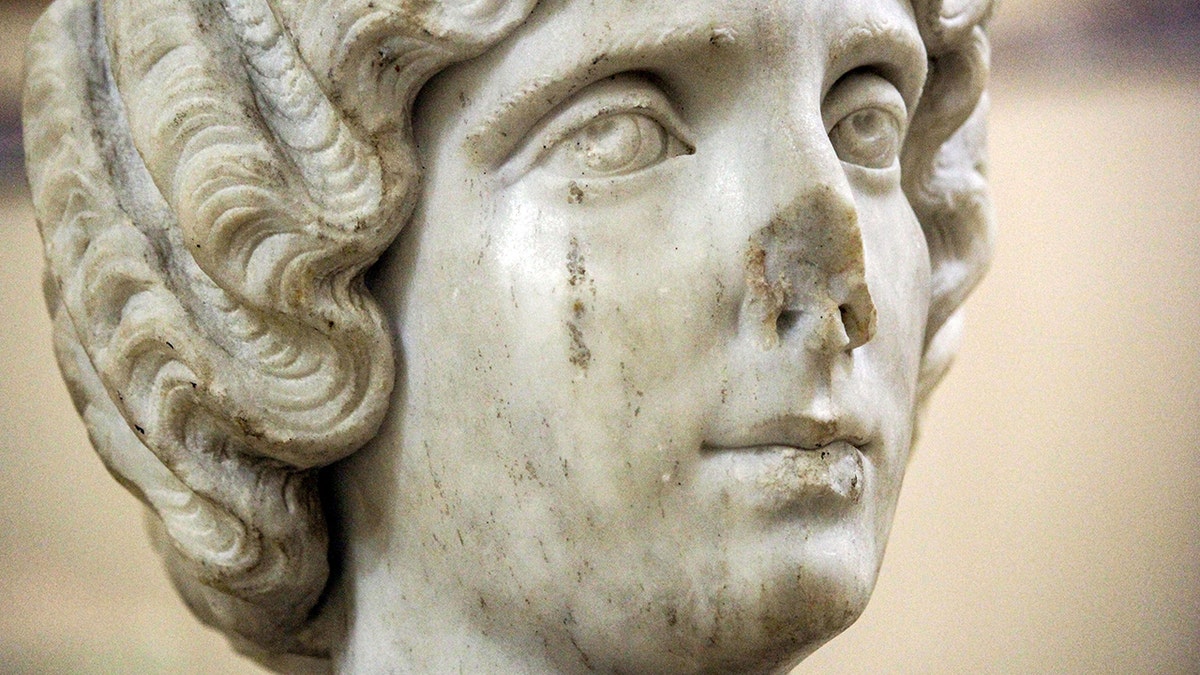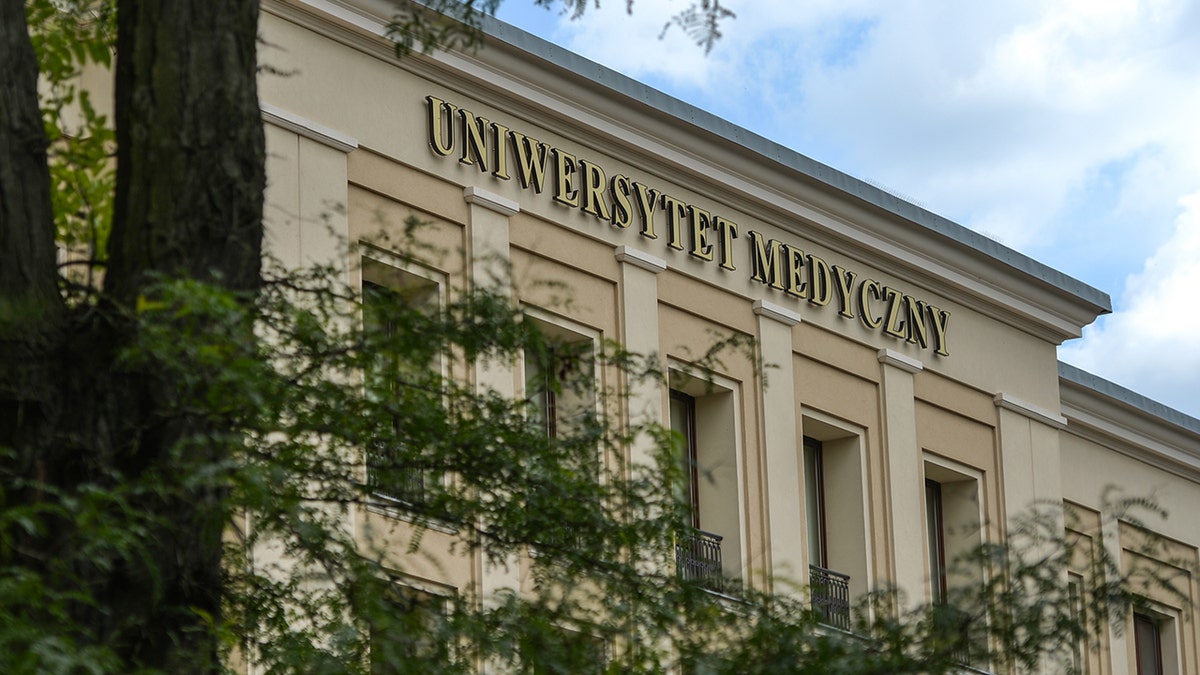[ad_1]
Lublin Provincial Conservator of Monuments, a corporation devoted to the safety of historic artifacts in Poland, revealed the invention of varied treasures, together with silver cash, and amongst them was an Ancient Roman counterfeit cache.
An group known as the “Group of Explorers” stumbled upon cash, fibules, knives and numerous kinds of instruments utilizing steel detectors.
The people explored the grounds of Księżpol, a village in Poland, and unearthed denars, or cash, minted between the years 138-251.
The Lublin Provincial Conservator of Monuments posted to social media to exhibit the findings. The account responded to 1 consumer who inquired concerning the cash’ financial worth.
SMALL FRAGMENTS OF ANCIENT ROOF TILES FOUND IN THE CITY OF DAVID PROVIDE EVIDENCE OF JERUSALEM’S HISTORY

Coins with the faces of former Roman Emperor’s Antonius Pius and Marcus Aurelius had been discovered among the many historic artifacts unearthed in Poland. (Sepia Times/Contributor | Bildagentur-online/Universal Images Group through Getty Images)
“Priceless,” Lublin’s account stated.
“Coins – especially Roman ones, and the fact that such a large number of these relics were found in one place – are an exceptional rarity,” one other remark from Lublin learn. “Archaeologists from Zamość claim that this is a sensational and exceptional find. One can initially assume, but this requires further verification – that it may have been connected with a trade route. Because the coins are Roman, medieval and modern.”
Photographs of Roman silver cash stamped with the face of Antonius Pius, a former Roman Emperor, minted within the years 138-161, had been among the many found. An in-tact silver coin with the face of Pius’ spouse, Faustina the Younger, was additionally acquired.
Among the images of every discover was a silver coin, which was decided to have been minted within the yr 174, that featured the face of the Roman Emperor and thinker, Marcus Aurelius.
THOUSANDS OF ANCIENT COINS FOUND IN SEA GRASS OFF THE COAST OF SARDINIA

A coin with Faustina the Younger’s face minted on it was among the many historic artifacts discovered. (AFP through Getty Images)
Several cash recognized as counterfeits had been additionally among the many discoveries. An illegible silver coin, believed to have been made by Goths from Wielbaric tradition, and a counterfeit Pius coin made by the Goths from a camel tradition, had been offered on Lublin’s social media submit.
Rugged fragments of cash had been additionally discovered among the many fields. A chunk of a Pius coin minted in 146-152 is presumed by consultants to have been deliberately reduce throughout commerce alternate.
The fragment of a uncommon coin glossed with the face of Etruscan Herenia, spouse of Roman Emperor Trajan Decjiusz, was discovered among the many discoveries. Only 1 / 4 of the piece was current on the time of discovery, and it’s anticipated that the coin was reduce throughout commerce.
Elsewhere, silicon instruments, pottery and ceramics present in the identical space and are estimated to be from the Early Middle Ages, the Old Polish interval and the Modern Period, had been analyzed by archeology consultants.

The artifacts discovered had been instantly delivered to the University of Lublin. (Artur Widak/NurPhoto through Getty Images)
SUBSCRIBE TO OUR NEWS TO KEEP POSTED
The “Group of Explorers” is led by Janusz Szabat and Piotr Magoch and sometimes seeks the unearthing of historic artifacts and relics.
Notably, the steel detectorists instantly supplied the traditional finds to the University of Lublin and switch to the Museum in Belgrade is anticipated sooner or later.
[ad_2]
Source

